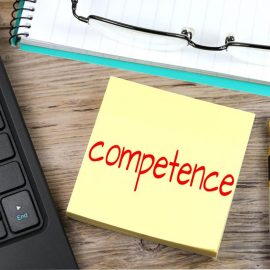

This article is an excerpt from the Shortform book guide to "The Buddha and the Badass" by Vishen Lakhiani. Shortform has the world's best summaries and analyses of books you should be reading.
Like this article? Sign up for a free trial here.
What’s the key to making work more enjoyable? How do you make a boring day fun at work?
In The Buddha and the Badass, Vishen Lakhiani advises merging enlightenment and disruptiveness in the workplace. This is to turn work into an enjoyable and fulfilling pursuit for you and your employees, rather than a dreadful place to spend your day.
Check out how to make work more enjoyable.
1. Develop a Mission and Rally Employees Behind It
To learn how to make work more enjoyable, Lakhiani advises that you develop a mission to improve the world that will keep employees motivated. People naturally need missions to fuel their efforts. Without a mission, they have no reason to care about what they’re doing.
This mission should specifically be aimed at positively impacting others. Ask yourself how you can help humanity through what you’re doing—perhaps by providing affordable, sustainable clothing to people around the world. State your mission clearly so both applicants and consumers see what you stand for. Lakhiani notes consumers also expect companies to develop social and political perspectives and to act on those perspectives, so stating your mission is important commercially, as well.
2. Make Personal Growth a Top Company Priority
Lakhiani stresses that to make work so enjoyable and fulfilling that it feels like play, you must create a work environment that’s completely geared toward helping employees grow as people. Humans only feel happy when they’re improving themselves, so as a leader, make it your top priority to help them do this at work. Not only are your employees happier and more effective, but your business will reap the benefits of your employees’ self-improvement.
To encourage growth, let your team have their mornings to do what they want. This might be to invest in self-improvement projects, catch up on sleep, spend time with family, or go into work, if they choose. Lakhiani writes that at his company, meetings don’t start until 11:30 a.m., and it doesn’t matter to him when employees work, as long as they attend meetings and perform well. When employees have this time for themselves, they tend to be more engaged when they do work.
(Shortform note: To help employees grow at work, you might have to first instill a growth mindset in them. A growth mindset is the belief that you can improve your abilities, and it’s critical in order to achieve any long-term growth in life. In addition to giving your employees mornings to grow on their own, you can also create a growth work culture that lets employees know you believe they have the capacity to improve. You can do this by being open to employees contradicting or challenging you. Doing this indicates you’re OK with being wrong and learning from mistakes and that employees can do this, too. A growth work culture also makes employees more committed and trusting, which compounds their happiness at improving.)
3. Ask Employees to State Their Life Goals, and Support These
In the same way you must stay true to your values (which we discussed in the first part of this guide), you also want your employees to stay true to theirs so they can be their happiest and most effective selves, writes Lakhiani. To encourage your whole team to stick to their values, have them publicly write out three life goals: the experiences they want to have, the ways they’d like to grow, and how they’d like to give back to the world. Knowing this helps everyone at the company support each other in achieving those goals.
(Shortform note: Being asked to openly share personal aspirations may seem like an overstep for some employees. Not everyone wants to bare their souls to co-workers. Lakhiani writes his advice based on his experience running his company Mindvalley, which has fostered a unique and intimate culture where such sharing is the norm. But if your company doesn’t have a highly open culture, making goal-setting exercises—and workplace social events in general—optional may be the best way to keep employees happy and effective.)
Encourage Deep Personal Connections
Next, encourage strong personal connections between employees, writes Lakhiani. This is important to do because personal connection is an evolutionary necessity for all humans, and we’re happier when we’re surrounded by people we like and who care for us. Connectedness also makes us more capable and confident because we can be authentically ourselves and have the support of others.
To foster such connections, Lakhiani proposes making friendships at work a priority. You can do this by hiring according to your values: People who share values are more likely to get along. You can also do this by hosting social events and initiating rituals—like daily gratitude sessions—during which employees can share intimately with each other.
4. Decide How You Want Your Life to Look Like Based on Your Identity
The final step Lakhiani recommends concerns your personal merging of enlightenment and disruption. He writes that to realize your ideal life based on your identity, values, and purpose, you must disrupt how you think about yourself to establish new, constructive patterns of thought. He provides a three-step process for doing this.
Step 1: Describe your ideal day if you were exactly the person you wanted to be. Consider what you’d do in the mornings, what you’d look like, what your work would look like, who your friends are, and so on. Be as detailed as possible.
Step 2: Ask what sort of person you’d have to become to live this ideal day. Reflect on four dimensions and secondary factors of this person:
- Well-being: Describe your physical health, mental health, and emotional health. Do you feel energetic? What emotions do you feel over the course of the day?
- Creativity: How well can you access a state of concentration and enjoyment when working? How easy is it for you to focus on your goals? How clearly have you defined your purpose?
- Material well-being and life control: Are you financially comfortable? Can you handle your work and personal projects? Do solutions to problems come easily to you?
- Relationships: Do you have mutually beneficial relationships with friends and co-workers? Are there people who care about you? Can you be authentically yourself?
Step 3: Now, assume the identity of this person by asking yourself questions as if you already possess the above-listed traits. For example, if you wrote in step 2 that the ideal version of yourself has many caring friends, you might ask yourself: “Why do I have such deep, loving relationships?” Asking such questions forces your subconscious to answer them—this is an automatic reaction. In this example, your subconscious might answer: “Because I’m a compassionate, thoughtful friend and invest heavily into my friendships.”
When your subconscious answers such questions, you’ll notice more opportunities to live out those answers. For instance, you might meet someone new and have the chance to become a compassionate, thoughtful friend to them. Lakhiani admits he’s not sure how this happens—if the Universe presents you with opportunities or if your brain simply becomes more attuned to such opportunities—but he’s confident that either way, this process works.
For each of the dimensions you listed in step two, write five to 10 such “why” questions.

———End of Preview———
Like what you just read? Read the rest of the world's best book summary and analysis of Vishen Lakhiani's "The Buddha and the Badass" at Shortform.
Here's what you'll find in our full The Buddha and the Badass summary:
- Why you don't need to work long, grueling hours to be successful
- How to transform your workplace from mundane to fun
- How to merge spiritual enlightenment with disruption





